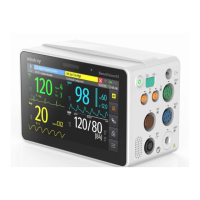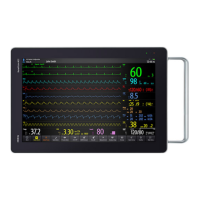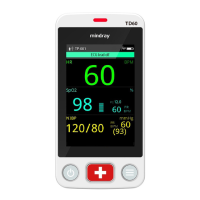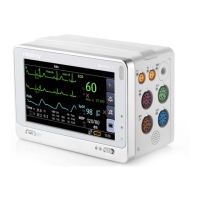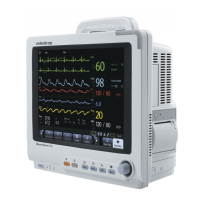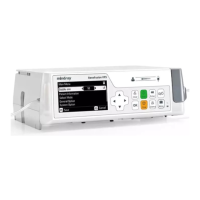BeneVision N Series Patient Monitor Operator’s Manual 11 - 3
If the CrozFusion
TM
function is disabled, ECG signal and the Pleth wave signal will not be analyzed together, and
the ECG SQI and Pleth SQI are not displayed. For more information, see 11.6.6Disabling the CrozFusion
TM Function
.
• The ECG numeric area and waveform area are configured to be different for different lead type and
ECG settings.
• The CrozFusion
TM
function uses ECG arrhythmia analysis leads according to the Analysis Mode
setting. So the ECG SQI indicates the signal quality of the ECG arrhythmia analysis leads.
11.4 Preparing for ECG Monitoring
11.4.1 Preparing the Patient Skin
Proper skin preparation is necessary to ensure good signal quality at the electrode sites, as the skin is a poor
conductor of electricity. To properly prepare the skin, choose flat areas and then follow this procedure:
1. Shave hair from skin at chosen electrode sites.
2. Gently rub skin surface at sites to remove dead skin cells.
3. Thoroughly cleanse the site with a mild soap and water solution.
4. Dry the skin completely before applying electrodes.
11.4.2 Applying Electrodes
To connect ECG cables, follow this procedure:
1. Check that electrode packages are intact and the electrodes are not past the expiry date. Make sure the
electrode gel is moist. If you are using snap electrodes, attach the snaps to the electrodes before placing
electrodes on the patient.
2. Place the electrodes on the prepared sites. Make sure that all electrodes have good skin contact.
3. Connect the leadwires to the patient cable if not already connected.
4. Plug the patient cable into the ECG connector.
• Store the electrodes at room temperature.
• Only open the electrode package immediately prior to use.
• Never mix patient electrode types or brands. This may lead to problem due to impedance mismatch.
• When applying the electrodes, avoid bony area, obvious layers of fat, and major muscles. Muscle
movement can result in electrical interference. Applying electrodes on major muscles, for example
on muscles of the thorax, may lead to erroneous arrhythmia alarms due to excessive muscle
movement.
The quality of ECG signal is poor. The HR value and arrhythmia analysis may be erroneous. The
Pleth signal is being used to correct the HR value and for arrhythmia analysis.

